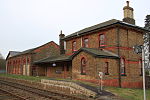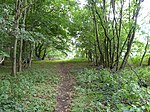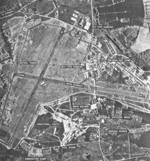Kesgrave Hall

Kesgrave Hall is a country house located in woodlands north of the town of Kesgrave, which itself is on the eastern outskirts of Ipswich, in Suffolk, England. It was constructed in 1812 by William Cunliffe-Shawe, and has been extended since, notably by the addition of a northern extension. The building has five large rooms downstairs, with another two in the northern extension, with a further seven upstairs. The building is set in 38 acres (150,000 m2) of grounds, which includes woodlands, marsh and fields; a stream, which rises on Playford Heath, north of Kesgrave village, and joins the River Fynn, itself a tributary of the Deben, at Martlesham, runs west to east through the grounds. The Hall has had several uses during its life, including housing five different boarding schools. Since late April 2008, the building has been used as a restaurant and hotel and owned as a joint venture by the Hills Building Group and the Milsom Hotel Group.
Excerpt from the Wikipedia article Kesgrave Hall (License: CC BY-SA 3.0, Authors, Images).Kesgrave Hall
Hall Road, East Suffolk
Geographical coordinates (GPS) Address Website External links Nearby Places Show on map
Geographical coordinates (GPS)
| Latitude | Longitude |
|---|---|
| N 52.070771 ° | E 1.256759 ° |
Address
Kesgrave Hall
Hall Road
IP5 2PU East Suffolk
England, United Kingdom
Open on Google Maps









